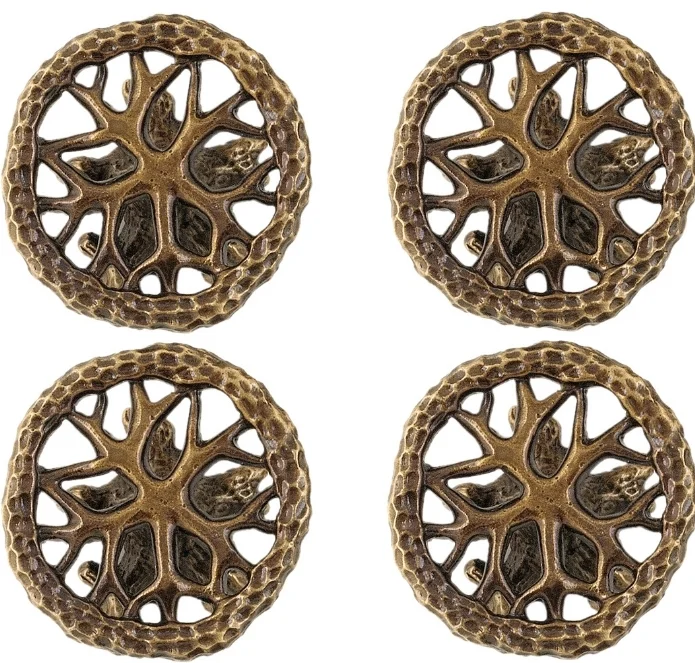We are currently adapting our large Willow cabinet pull so that there are fewer fanned leaves at the ends. The request is to make the piece to be visually lighter while retaining the integrity of the design.
The design adaptation raises the question whether to make a new mold or whether to modify each piece. Our door and cabinet handles are cast in the lost wax method, meaning that each bronze casting first took shape as a wax model. The wax model is made by pouring melted wax into the cavity of the mold which is left to cool and then extricated from the mold. This process is like the way one makes jelly rabbits and other shapes using melted gelatin and inverted animal molds which are refrigerated so that the gelatin sets. The molds we use are typically made in 2 snug halves that are tightly clamped together so that the wax will remain in the hollow cavity until it is solid, the 2 halves are then de-clamped and removed leaving the wax replica.
In the image you can see that the red wax willow pull has been modified so that there are fewer leaves than is the case with the standard bronze pull. The image shows the original pattern that was carved in wood and then painted with a grey coating to fill in the wood grain or pores. As we did not want to permanently modify our one pattern, we chose to modify all 37 waxes so that we could then cast 37 bronze pulls.
The bronze castings made in the lost wax method are essentially the third generation of a design, moving from carved pattern to wax replica to bronze replica. With each generation there is a subtle loss of detail and size and both aspects need to be factored into the making of the pattern. The pattern needs to be larger than the proposed piece as shrinkage occurs at both the wax and bronze stages. Undercuts and design lines need to be sharper and deeper in the pattern as these will be less defined in the wax and bronze.








